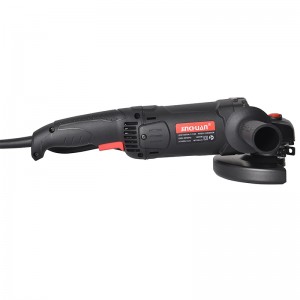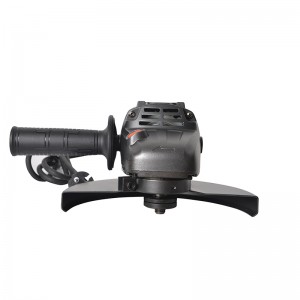In the field of industrial operations, Angle grinders have become indispensable tools due to their powerful cutting and grinding capabilities. However, their high-speed operation also poses safety risks. To ensure user safety, various safety standard systems have been established globally, among which the standards of the Occupational Safety and Health Administration (OSHA) of the United States, the CE certification standards of the European Union, and the Chinese national Standard (GB) are widely applied. A thorough comparison of these standards can help international wholesale purchasers accurately grasp the compliance and quality requirements of their products and steadily move forward in the global market.
OSHA standards: Stringent electrical and mechanical safety regulations
OSHA standards place particular emphasis on the electrical safety of industrial Angle grinders. The Angle grinder must be equipped with a grounding wire or a double insulation system to prevent electric shock accidents caused by leakage. Moreover, the power cord should have anti-wear and high-temperature resistance properties to adapt to complex industrial environments. In terms of mechanical safety, it is mandatory to install adjustable protective covers, which should be designed to effectively block splashes and users must not disassemble them without authorization during operation. In addition, OSHA has strict regulations on the starting and braking devices, requiring switches to have an anti-accidental starting function and brakes to stop the grinding wheel from rotating within a short period of time to minimize the risk of injury.
CE standard: Comprehensive safety considerations in all aspects
The EU CE certification standards cover multiple safety dimensions of Angle grinders. In terms of electrical safety, in addition to the basic insulation requirements, it is also necessary to pass electromagnetic compatibility tests to ensure that the equipment does not interfere with other electronic devices during operation. In terms of mechanical safety, it is emphasized that the protective cover must be capable of withstanding the impact force generated by the breakage of the grinding wheel, and its opening size must comply with strict standards to prevent accidental contact of human body parts with high-speed rotating components. In terms of noise and vibration control, the CE standard also has clear restrictions, requiring manufacturers to provide data on the noise level and vibration value of the equipment to safeguard the hearing and physical health of users and reflect concern for long-term occupational health risks.
GB standard: Practical norms that meet local demands
Chinese national standards (GB) are formulated based on drawing on international experience and in combination with the local industrial environment. Electrical safety requirements are in line with international standards, emphasizing key indicators such as insulation resistance and withstand voltage tests. In terms of mechanical protection, the protective performance of the protective cover is equally emphasized. At the same time, detailed regulations are made on the installation and fastening methods of the grinding wheel to prevent it from falling off during high-speed rotation. In addition, the GB standard sets requirements for the weather resistance and environmental adaptability of equipment in common domestic application scenarios such as construction and manufacturing, ensuring that Angle grinders can operate stably and safely under different climatic conditions and working environments.
The differences and commonalities of the three major standards
Although the three major standards differ in specific parameters and testing methods, their core objective is the same – to ensure user safety. OSHA standards focus on immediate safety protection at the workplace. The CE standard emphasizes the safety and environmental friendliness of products throughout their entire life cycle. The GB standard takes into account both international common requirements and the actual needs of domestic industries. International wholesale purchasers need to select Angle grinders that meet the corresponding standards in accordance with the regulatory requirements of the target market. At the same time, they can also choose high-quality products that can simultaneously meet multiple standards to expand market coverage and reduce trade risks caused by standard differences.
A thorough understanding of global safety standards for industrial Angle grinders such as OSHA, CE, and GB is the key for international wholesale purchasers to ensure product compliance and win customer trust. A clear understanding of the details and differences of each standard helps to achieve precise procurement and sales, gain an advantageous position in the global industrial tool market, and promote the development of safe and efficient industrial operations.
Post time: Jul-02-2025


